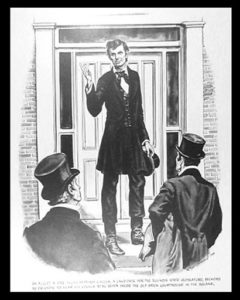 During Abraham Lincoln’s first year in New Salem he joined a pretentiously named Literary and Debating Society, which was actually an informal discussion group run by James Rutledge. Rutledge was a well-respected leader in town, father of ten children, and proprietor of an inn, Rutledge’s Tavern. He also had an extensive personal library of nearly thirty books, and this became one of Lincoln’s favorite hangouts.
During Abraham Lincoln’s first year in New Salem he joined a pretentiously named Literary and Debating Society, which was actually an informal discussion group run by James Rutledge. Rutledge was a well-respected leader in town, father of ten children, and proprietor of an inn, Rutledge’s Tavern. He also had an extensive personal library of nearly thirty books, and this became one of Lincoln’s favorite hangouts.
By this time Lincoln was well known as someone ready with a funny story or ribald joke, but in his first debating effort he surprised the audience with a thoughtful, well-reasoned, analytical presentation. Rutledge was impressed, later telling his wife that “there was more in Abe’s head than wit and fun, that he was already a fine speaker; and that all he lacked was culture to enable him to reach the high destiny which he knew was in store for him.”
Reaction from townspeople was so positive that in March 1832 Lincoln put his name into contention for the Illinois state legislature. He composed a lengthy announcement titled “Communication to the People of Sangamo County,” which was published in the Sangamo Journal. In it he laid out his political philosophy, which was astonishingly rounded for a 23-year-old man raised on frontier farms. That philosophy largely mimed the American System originated under Alexander Hamilton and promoted by Henry Clay, whom Lincoln later eulogized as his “beau ideal of a statesman.”
The American System was an economic philosophy premised on three mutually reinforcing pillars: a high protective tariff, a national bank, and federal subsidies for internal improvements (roads, canals, railroads). The goal was to facilitate the development of transportation infrastructure and strong markets, particularly for rural farmers who were cut off from much of the market economy. While a stable two-party system had not yet fully developed, the American System quickly became the mainstay of the Whig party in opposition to the policies of Democratic President Andrew Jackson. Lincoln later asserted he “had always been a Whig” (that is, until he was a Republican).
In response to local concerns, Lincoln noted he was not (yet) in favor of railroads because their costs outweighed the benefits. But referring to his own experience on flatboats, he strongly supported improvements to the navigability of the Sangamon River, which was so important to New Salem. Presaging his future as an analytical thinker, Lincoln went into great depth in his discussion of why river navigation presented a more efficient economic opportunity than railroads. He also spoke up against usury, the loaning of money at exorbitant interest rates, and emphasized the importance of central banking. Finally, while not dictating any specific system, he stressed that education was “the most important subject which we as a people can be engaged in,” stating that his wish was that “every man may receive at least, a moderate education.”
This was an extraordinary treatise for a man who had only recently moved into the county. Lincoln mentioned that his “peculiar ambition” was to be “truly esteemed of my fellow men, by rendering myself worthy of their esteem,” but also seemed to understand that he had a slim chance of winning a seat, noting “if elected [the independent voters of this county] will have conferred a favor upon me,” but that if he lost he had “been too familiar with disappointments to be very much chagrined.”
He lost.
It is not clear whether Lincoln was chagrined over this loss. Immediately after publishing his announcement to enter the race, he volunteered for service in the Black Hawk War. This left him only a few weeks upon his return to canvass the outer portions of the county, while his many competitors had the entire summer. On a positive note, he won 277 of the 300 votes cast in New Salem. This was testament to his popularity in the short time he had lived in the village, especially considering that support came from a precinct that overwhelming voted for Jackson’s reelection that year (Lincoln was well-known backer of Jackson’s opponent, Henry Clay). In his 1860 Presidential campaign biography, Lincoln took solace in the fact that this was the only time he was ever “beaten on a direct vote of the people.” It would not, however, be the last time he lost an election.
[Adapted from Lincoln: The Man Who Saved America]
David J. Kent is an avid science traveler and the author of Lincoln: The Man Who Saved America, in Barnes and Noble stores now. His previous books include Tesla: The Wizard of Electricity and Edison: The Inventor of the Modern World and two specialty e-books: Nikola Tesla: Renewable Energy Ahead of Its Time and Abraham Lincoln and Nikola Tesla: Connected by Fate.
Check out my Goodreads author page. While you’re at it, “Like” my Facebook author page for more updates!



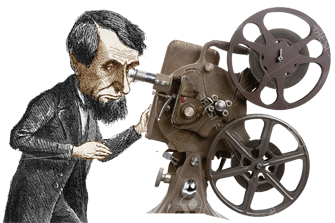
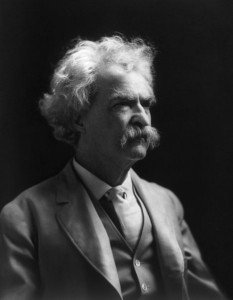 Samuel Clemens, known to most of us by his pseudonym Mark Twain, was born in Hannibal, Missouri on November 30, 1835, shortly after Halley’s Comet had made its regular but rare pass by the Earth. The 26-year-old Abraham Lincoln – an amateur astronomy buff who two years earlier had marveled at the Leonid meteor showers – may very well have been gazing at the skies when Mark Twain came into this world. At that age Lincoln lived in New Salem, Illinois, just a stone’s throw across the Mississippi River from Hannibal. In 1859, Lincoln rode the Hannibal and St. Joseph Railroad to give a speech in Council Bluffs, Iowa. The railroad just happened to be formed in the office of Mark Twain’s father thirteen years before.
Samuel Clemens, known to most of us by his pseudonym Mark Twain, was born in Hannibal, Missouri on November 30, 1835, shortly after Halley’s Comet had made its regular but rare pass by the Earth. The 26-year-old Abraham Lincoln – an amateur astronomy buff who two years earlier had marveled at the Leonid meteor showers – may very well have been gazing at the skies when Mark Twain came into this world. At that age Lincoln lived in New Salem, Illinois, just a stone’s throw across the Mississippi River from Hannibal. In 1859, Lincoln rode the Hannibal and St. Joseph Railroad to give a speech in Council Bluffs, Iowa. The railroad just happened to be formed in the office of Mark Twain’s father thirteen years before.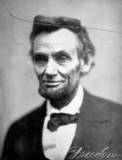 Lincoln floated flatboats down the Mississippi River to New Orleans as a young adult, then took steamboats back upriver. He often piloted steamboats around shoals near his New Salem home. Mark Twain had worked on steamboats on the river for much of his younger years, first as a deckhand and then as a pilot. Being a riverboat pilot gave him his pen name; “mark twain” is “the leadsman’s cry for a measured river depth of two fathoms (12 feet), which was safe water for a steamboat.” In 1883 Twain even titled his memoir, Life on the Mississippi. As we have already seen, Lincoln’s time traveling on and piloting steamboats eventually inspired his patent for lifting boats over shoals and obstructions on the river.
Lincoln floated flatboats down the Mississippi River to New Orleans as a young adult, then took steamboats back upriver. He often piloted steamboats around shoals near his New Salem home. Mark Twain had worked on steamboats on the river for much of his younger years, first as a deckhand and then as a pilot. Being a riverboat pilot gave him his pen name; “mark twain” is “the leadsman’s cry for a measured river depth of two fathoms (12 feet), which was safe water for a steamboat.” In 1883 Twain even titled his memoir, Life on the Mississippi. As we have already seen, Lincoln’s time traveling on and piloting steamboats eventually inspired his patent for lifting boats over shoals and obstructions on the river.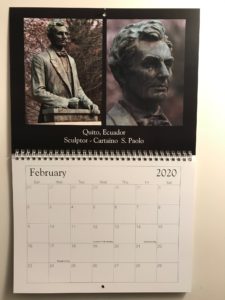 As Lincoln’s birthday week begins I turn to the David Wiegers calendar for another international statue of Abraham Lincoln. This one is in Quito, Ecuador.
As Lincoln’s birthday week begins I turn to the David Wiegers calendar for another international statue of Abraham Lincoln. This one is in Quito, Ecuador.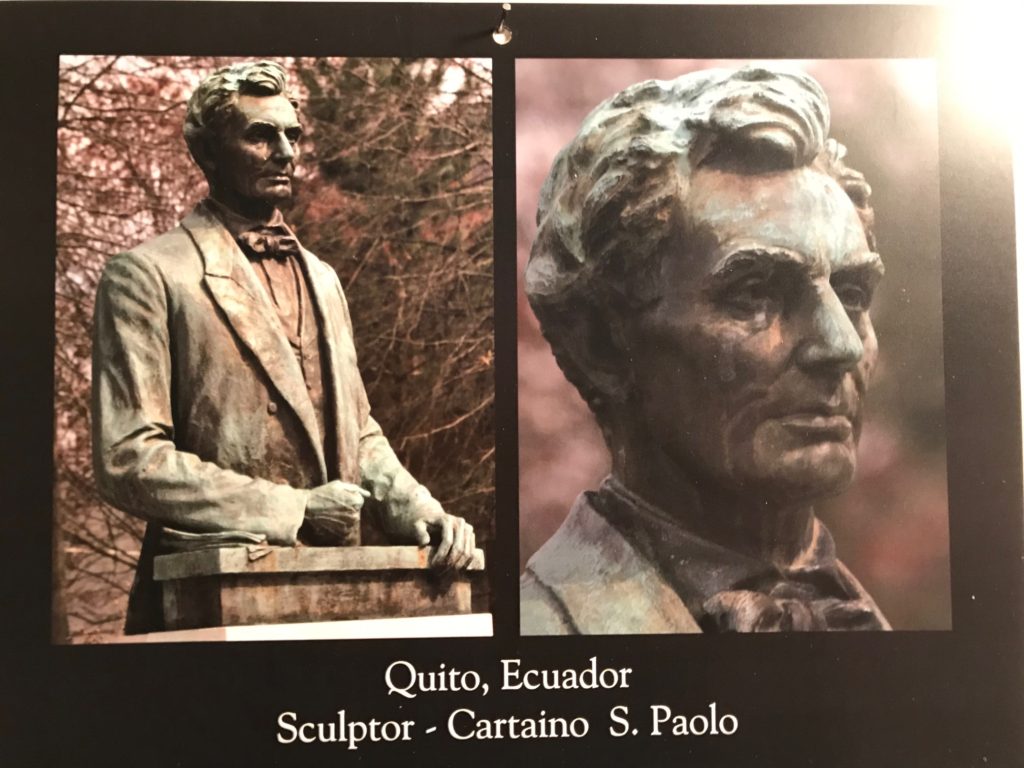
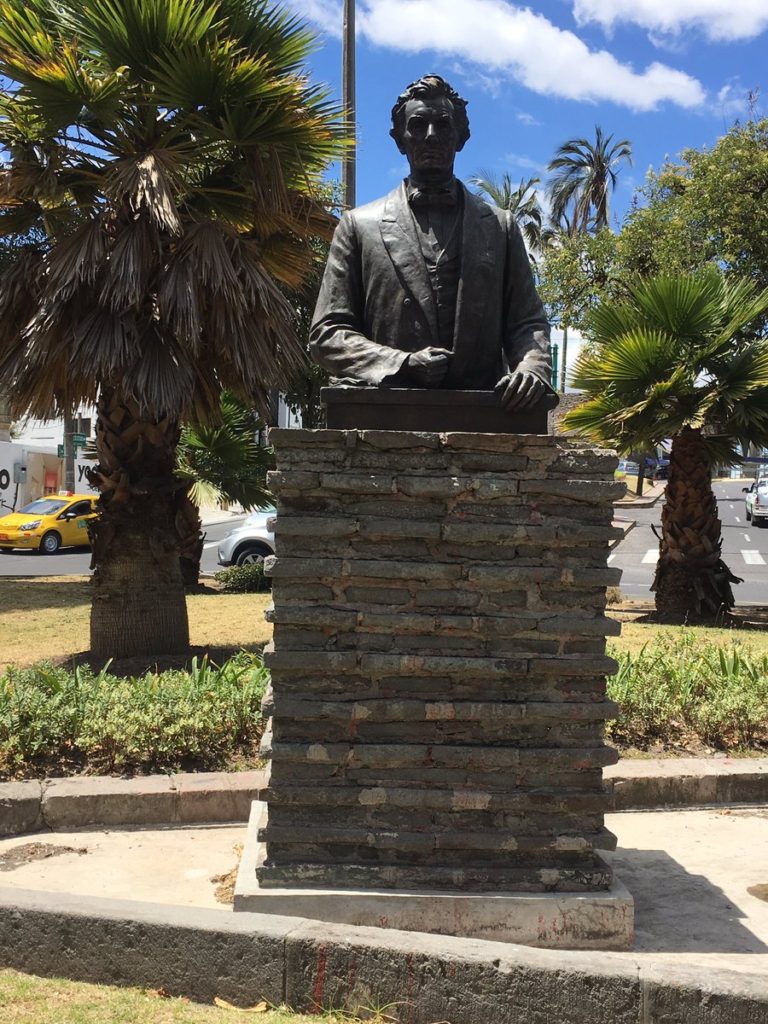
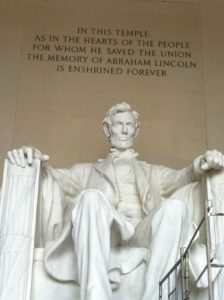 Abraham Lincoln is best known for his Emancipation Proclamation, Gettysburg Address, and saving the Union during the Civil War. But in this Black History Month it’s important to remember that Lincoln also pushed for black voting rights.
Abraham Lincoln is best known for his Emancipation Proclamation, Gettysburg Address, and saving the Union during the Civil War. But in this Black History Month it’s important to remember that Lincoln also pushed for black voting rights.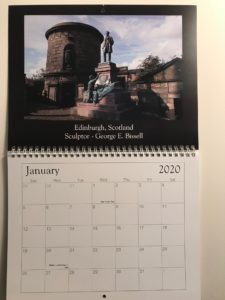 David Wiegers is a photographer. He is also an Abraham Lincoln fan. He has combined those two interests into a calendar featuring photos of Lincoln statues from around the world. January is the statue in Edinburgh, Scotland.
David Wiegers is a photographer. He is also an Abraham Lincoln fan. He has combined those two interests into a calendar featuring photos of Lincoln statues from around the world. January is the statue in Edinburgh, Scotland.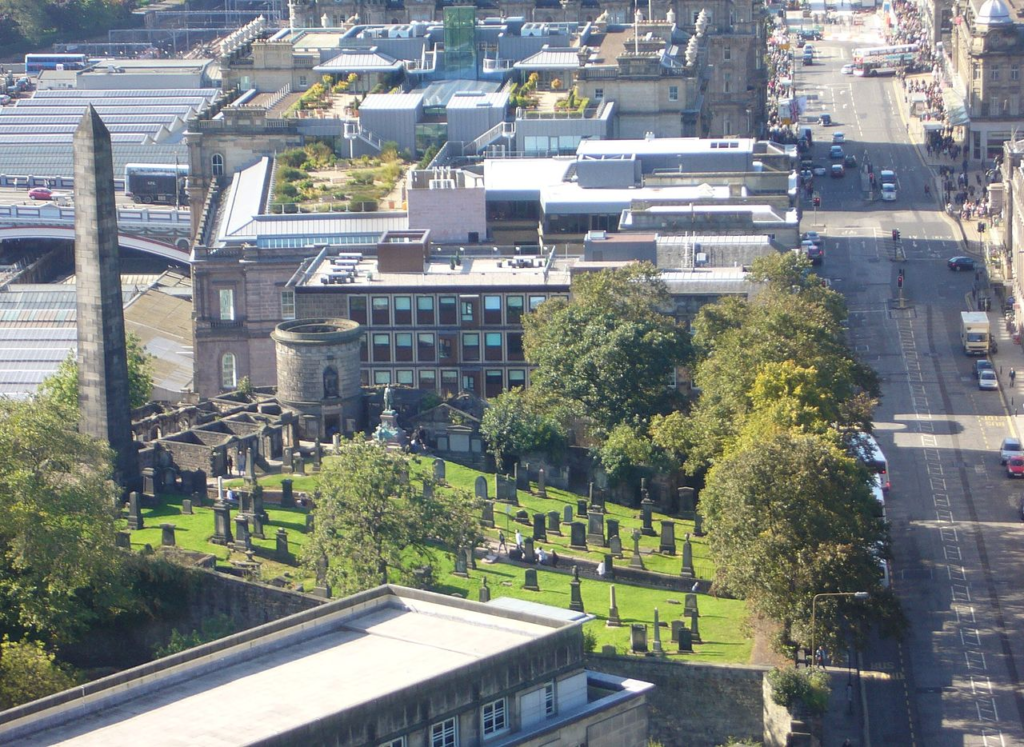
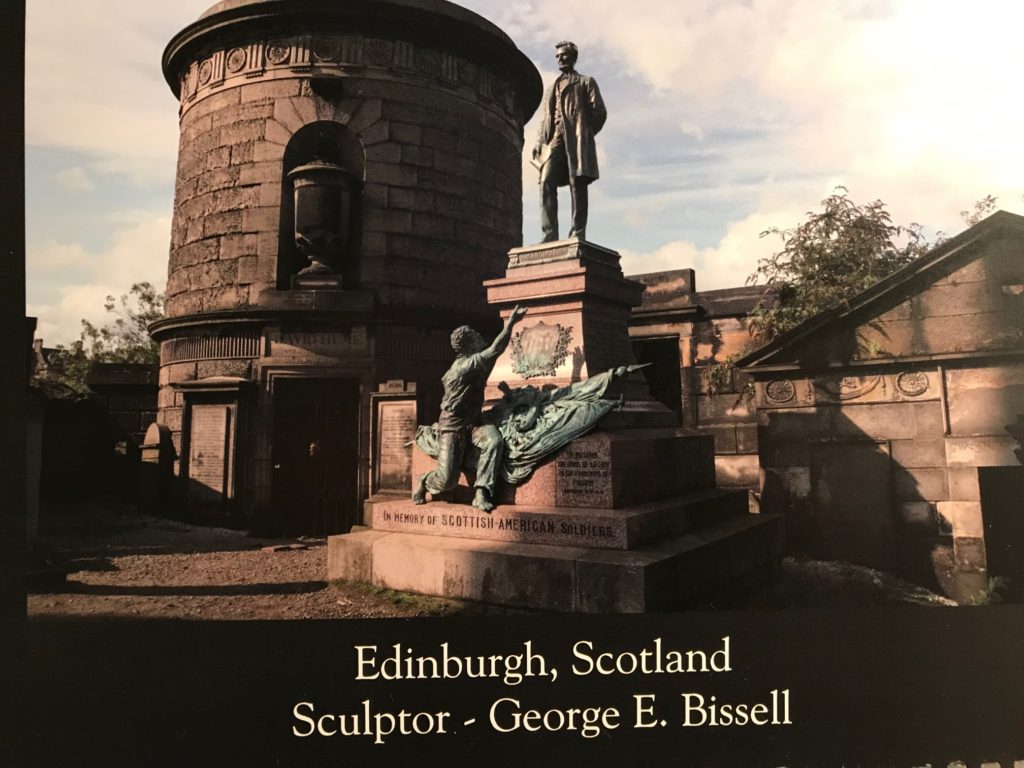
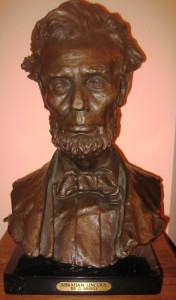 Several times in 1858 Lincoln delivered a lecture he called “Discoveries and Inventions.” Not a particularly successful lecture – the fragments we have remaining suggest it was a bit rambling and lacking in his later eloquence – it presented what was essentially the “American System” of economics based on continuing intellectual and technological improvements.
Several times in 1858 Lincoln delivered a lecture he called “Discoveries and Inventions.” Not a particularly successful lecture – the fragments we have remaining suggest it was a bit rambling and lacking in his later eloquence – it presented what was essentially the “American System” of economics based on continuing intellectual and technological improvements.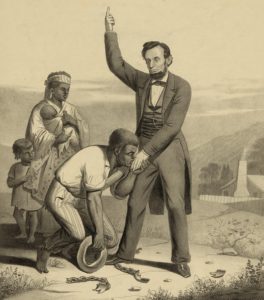 Abraham Lincoln signed the Compensated DC Emancipation bill into law about five months before he released his preliminary Emancipation Proclamation. But that wasn’t the first time he tried to free enslaved people in the Washington, D.C.
Abraham Lincoln signed the Compensated DC Emancipation bill into law about five months before he released his preliminary Emancipation Proclamation. But that wasn’t the first time he tried to free enslaved people in the Washington, D.C.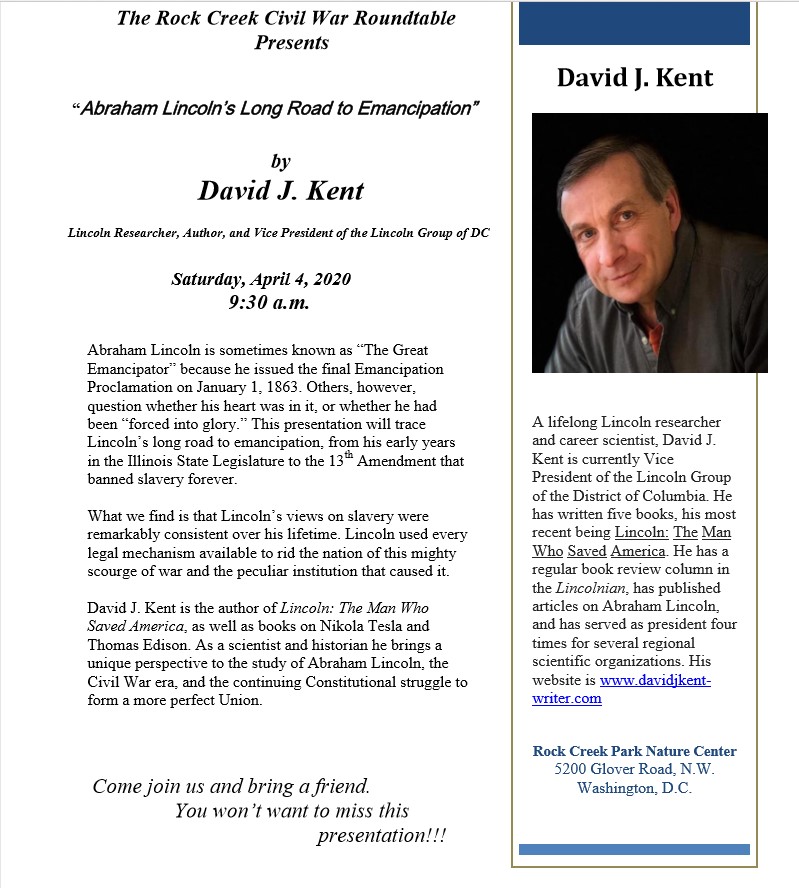
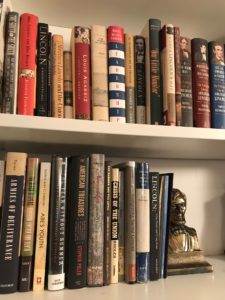 This was a big year in Abraham Lincoln book acquisitions. My average number of new books acquired has been a fairly consistent 58 books over each of the last five years. This year was 82. While that’s a big jump from my average, it still falls short of the 98 I acquired back in 2013.
This was a big year in Abraham Lincoln book acquisitions. My average number of new books acquired has been a fairly consistent 58 books over each of the last five years. This year was 82. While that’s a big jump from my average, it still falls short of the 98 I acquired back in 2013.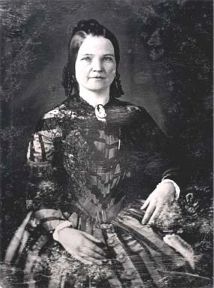 Mary Todd, the future Mary Lincoln, was born on December 13, 1818 in Lexington, Kentucky. She would go on to become one of the most broken-hearted, and often reviled, women in history.
Mary Todd, the future Mary Lincoln, was born on December 13, 1818 in Lexington, Kentucky. She would go on to become one of the most broken-hearted, and often reviled, women in history.






